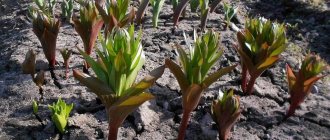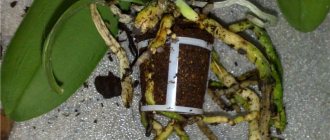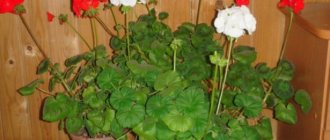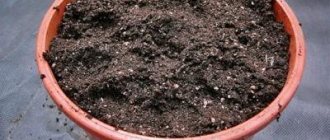In the Fuchsia genus of the Fireweed family (Onagraceae), there are 113 (1) evergreen and deciduous species. The genus is named after the famous German scientist Leonard Fuchs, a botanist and physician who first described it in his fundamental work “The History of Plants.”
In the natural flora, fuchsias are found in Central and South America, as well as in New Zealand. In culture today, along with individual species and their varieties, hybrid fuchsia (Fuchsia hybrida) is most often grown.
In nature, the life forms of fuchsias are shrubs, shrubs, subshrubs and even small trees with opposite or whorled oval or lanceolate leaves. The surface of the leaves is smooth (matte, glossy) or velvety.
Any fuchsia has a bright personality thanks to drooping flowers of various colors and original shapes. They are called ballerinas, gypsy earrings, Chinese lanterns, dolls, trinkets. Fuchsia flowers are an excellent subject for both spectacular photographs and thoughtful consideration. And the structure of the flower is very convenient for artificial pollination when creating new varieties. It consists of a tubular calyx that ends in four spreading sepals, a corolla with straight petals that form a crown, long stamens and a pistil (ballerina's foot), which hang a few centimeters below the petals.
Flowers are simple (non-double), semi-double, double. Semi-double fuchsias have up to 7 petals in a flower, while double fuchsias have 8 or more petals.
Fuchsias bloom from spring to late autumn, and under favorable conditions almost all year round.
The fruit is an edible berry. The seeds are very small, almost flat, light brown.
Types and varieties of fuchsia
At home, 8 types of fuchsias are most often grown.
Fuchsia triphylla. Forms a dense bush when grown in pots up to 60 cm high. The leaves are ovate, about 8 cm long, the upper side of the leaf is reddish-green, the lower side is brown-red. Bell-shaped flowers are collected in a brush. Their color is determined by the bright coral sepals that form a tube. The petals are the same color, very short, barely protruding from the calyx.
Flowering is abundant and lush - from May to October.
In winter, this fuchsia is kept at a temperature not lower than 10 ° C and not higher than 15 ° C. In summer it can withstand high temperatures and even bright sun.
Fuchsia trifolia gave rise to triphylla hybrids, on the basis of which excellent varieties for hanging baskets and flower pots emerged:
- Thalia - with bright orange flowers;
- Mantilla - with bright red flowers;
- Coralle – with coral-colored flowers;
- Elfriede Ott – with peach-pink flowers.
Fuchsia trifolia.
Photo: pixabay.com Magellanica . This evergreen fuchsia is the most winter-hardy and hardy. It comes from the mid-mountains of the Andes and is capable of wintering under snow even in central Russia when covered with spruce branches and light hilling. However, plants are usually grown in containers and placed in a cool (3–5 °C) room for the winter.
Its leaves are violet-green, about 4 cm long. The flowers are solitary or in racemes of 3-5 pieces, with a creamy-red calyx and a purple corolla.
Blooms from May to October.
This fuchsia also has interesting varieties:
- Blue Sarah - with lilac-pink flowers;
- Contrast – with purple-red flowers;
- Madame Cornelissen - with red and white flowers;
- Riccartonii – with red-violet flowers;
- Tom West - with purple-red flowers and variegated leaves.
Fuchsia Magellanica.
Photo: pixabay.com Bolivian fuchsia (Fuchsia boliviana). One of the most beautiful fuchsias. An evergreen shrub, grown in containers about 1 m high, grows well indoors and tolerates pruning easily. With good care it blooms almost all year round. Prefers partial shade and sufficient moisture. Overwinters at a temperature of about 10 °C.
The leaves are large (up to 15 cm long and about 6 cm wide) dark green with a velvety surface and a serrated edge. The flowers are dark red, tubular, with a long (about 6 cm) calyx and a short corolla (2 cm), collected in lush racemes at the ends of drooping peduncles. This fuchsia has an Alba - with a white skirt.
Fuchsia Boliviana. Photo: pixabay.com
Bright red fuchsia (Fuchsia coccinea). Shade-tolerant fast-growing shrub. The shoots are thin, hanging. The leaves are oval on short petioles. Flowers with long red calyxes and a purple corolla.
Blooms from April to October.
Fuchsia fulgens. Rare view. Well-leafed shrub up to 1.5 m high. The shoots are thin, flexible, reddish. The leaves are large, up to 15 cm long, broadly ovate, with a finely toothed edge, purple-green. The flowers are collected in drooping apical inflorescences-tassels. They have dark pink tubular calyxes about 5cm long and small red petals. This fuchsia has the most delicious and largest (up to 5 cm long) fruits with a tart lemon aroma. Unfortunately, they only ripen in nature.
Blooms from spring to autumn.
The most popular varieties:
- Swanley Yellow - with bright orange petals and cream sepals;
- Traudchen Bonstedt - with pale salmon sepals and bright salmon petals.
Fuchsia brilliant.
Photo: pixabay.com Small-leaved fuchsia (Fuchsia microphylla). A low-growing shrub with reddish shoots and small (up to 4 cm long), reddish-green pointed leaves with a serrated edge. The flowers are red-purple, small, solitary, located in the axils of the leaves.
Blooms from spring to autumn.
Fuchsia graceful (Fuchsia gracilis). Shrub up to 1 m high, with thin reddish shoots. The leaves are 5–6 cm long, green with reddish veins, oval-lanceolate in shape with a serrated edge and a smooth surface. The flowers are collected in gracefully cascading racemes. They have bright red calyxes and a purple corolla-skirt.
Fuchsia is elegant. Photo: YouTube
Hybrid fuchsia (Fuchsia hybrida). A widespread indoor plant, the number of its varieties has already exceeded a thousand. They differ in the shape of the flower, its size, the degree of terry, the color of the calyx (usually it is not green, but red or white in different shades) and corolla (white, pink, red, purple). Bicolor varieties are replete with spectacular color combinations.
Fuchsias also differ in flower size - small-, medium- and large-flowered. There are also unique forms - with palm-sized flowers.
Fuchsia hybrid. Photo: pixabay.com
The most popular – beautiful and unpretentious varieties include:
- Alfred de Groot - a resilient variety that easily adapts to growing conditions, a compact, erect bush, green leaves, ovate with a serrated edge, simple flowers with a soft pink calyx and a pink-violet corolla;
- Annabel - thin, drooping shoots, green leaves, lanceolate with a sharp tip and jagged edge, large, double flowers, with a white skirt and light pink sepals, dark pink stamens;
- Ballerina is an erect bush, large double flowers with scarlet sepals and a lush pale pink corolla, dark pink stamens;
- Cecile is an erect, highly branched bush, densely double flowers with light red sepals and bluish-lilac wavy petals;
- Clara – ampelous variety, large, double flowers, with white sepals and a cherry skirt in light strokes, pink stamens;
- Marinka is an ampelous variety, the flowers are simple, medium-sized, raspberry-red, blooms for a long time and very abundantly;
- Millenium is a very spectacular variety, an erect bush, large, double flowers, with purple-red sepals and a dark purple, almost black, rounded corolla;
- Niedersachsen - a classic ampelous variety, the flowers are large, semi-double and double, with dark pink sepals and a snow-white skirt;
- Prince of Peace - an unpretentious ampelous variety, green ovate leaves with a sharp tip and finely toothed edge, simple flowers with a white calyx and a bright red or purple-red corolla;
- Santa Clara - ampelous variety, large, double flowers, cherry-colored skirt with white strokes, white calyx.
- Voodoo - erect plants with densely double large flowers, bright red sepals, blue-violet corolla petals, wavy.
Varietal types of fuchsias (description)
In floriculture, there are about one hundred species of fuchsias. In cultural gardening, varieties and hybrids obtained from them are used. Today there are about twenty thousand varieties and hybrids of this beautiful plant. Their number continues to increase.
- Fuchsia Basseveldse Ezels with dense double inflorescences, grows in the form of a bush, has rounded buds of inflorescences with a white-pink combination of sepals on the inside with a cherry tint coating. The skirt of the flower is bright red.
Fuchsia flowers Basseveldse Ezels: photo - Fuchsia Bicentennial. A unique varietal hanging plant with large elongated salmon-colored buds. The flower is framed by a red terry skirt with peach-colored strokes. The blossoming flower changes color, becoming orange.
Fuchsia Bicentennial flowers: photo - Bolivian Fuchsia. A tall bush variety about one meter high with very large flowers collected in hanging clusters. The plant is designed for growing in a warm room and does not respond well to low temperatures. The flowering period occurs in March-April.
Bolivian fuchsia flowers: photo - Fuchsia Lenny Erwin. The plant has an ampelous shape, blooms with large double flowers with white sepals with green tips. The fluffy skirt of the flower is lilac in color. The form of the variety is ampelous.
Fuchsia flowers Lenny Erwin: photo
Caring for fuchsia at home
Photo: pixabay.com
In their homeland, fuchsias grow under the forest canopy, with high air humidity and moderate temperatures, illuminated by sunlight “strained” by the foliage. There is a significant difference between day and night temperatures. Similar conditions must be created for plants in our homes.
Priming
Fuchsias are quite suitable for universal soil mixtures for indoor plants with a slightly acidic reaction environment, however, to improve aeration, you need to add pieces of charcoal, perlite, vermiculite, as well as a little sand and clay soil or hydrogel to retain moisture.
You can prepare the soil for fuchsia yourself by mixing peat, humus or fertile soil and sand in a ratio of 2:3:1 (2). The earth needs to be warmed up or shed with a pink solution of potassium permanganate.
A layer of expanded clay drainage is poured onto the bottom of the pot, at least 1/4 of its height. In the absence of drainage, plants are at risk of waterlogging.
Lighting
Fuchsias need bright, but diffused light; they can also withstand light shading. Windows facing east or west are best. Or you can place the plant a couple of meters from the south window, protecting it from direct sunlight.
The location must be determined immediately, so as not to rearrange or rotate the plant later, especially during the period of budding and flowering. Fuchsias do not like this and can shed not only buds, but also leaves.
In summer, it is advisable to take indoor fuchsias out into the fresh air, but not under the scorching sun. In the garden they are placed in partial shade or on outside windowsills with full morning sun.
Temperature
During the period of active growth and flowering, the favorable temperature for fuchsias is from 18 to 25 °C, the optimal temperature is about 20 °C. Temperatures above 30 °C are depressing. In winter, in the stage of relative dormancy, the most suitable temperature is 5 - 10 ° C, taking into account the requirements of individual varieties and species (3), (4). In a cool room, the leaves may fall off, but new ones will grow in the spring. The room where fuchsias grow must be regularly ventilated, avoiding drafts.
Garden fuchsias can be kept in a frost-free basement until returned to open ground in the spring.
Humidity
Fuchsias need to be watered regularly, as the top layer of the substrate dries out, but moderately, avoiding either complete drying out or waterlogging of the earthen clod. It is recommended to drain excess water from the trays. In the warm season, fuchsias are responsive to spraying with settled water.
The best time to water is early in the morning, so that the plants actively absorb moisture before noon.
In autumn, watering is reduced, and in winter it is practically stopped, but make sure that the soil does not dry out.
Fertilizers
Fuchsias are fed with complex mineral fertilizers for indoor flowers or complete fertilizer with microelements. It is better to use fertilizer solutions.
Photo: pixabay.com
Feeding
Fuchsias are fed from mid-March to September every 7 to 10 days. From time to time, it is useful to water the plants with an infusion of mullein or chicken manure diluted 1:10. In September-October - 1 feeding per month, and then they are stopped until spring (5).
After transplanting into fresh soil, fuchsias begin to be fed after about 30 days.
Trimming
In order for fuchsias to be lush and bloom profusely, they need to be regularly pruned and shoots pinched, as the flowers appear on new growths. The main pruning is done in early spring - early March, or in the fall, after flowering and active growth are completed. Bushes can be shaped into different shapes.
During the growing season, shoots are shortened as necessary, sometimes even by 1/3, and thin and weak branches are removed. Usually the tops of the side shoots are pinched at the level of 2 - 3 pairs of leaves, due to this the fuchsia branches better and lays more buds. Pinching can be repeated every time three pairs of leaves are fully formed on the next side shoot (6).
During flowering, faded flowers are regularly removed to stimulate the formation of new ones.
Planting and caring for ampelous fuchsia - basic rules
Cultivation of ampelous fuchsia is carried out in two ways - seed and vegetative. Plant propagation by seeds is used extremely rarely, since it is a long and labor-intensive process that requires a certain amount of experience from the grower.
For seed cultivation you will need ampelous fuchsia fruits or seeds purchased at gardening stores. You can start sowing in mid or late March.
Seed growing algorithm:
- First of all, you need to take care of protecting the plant from self-pollination - to do this, tear off all the anthers and place the pollen on the stamens.
- Wrap the flower in gauze, secure with thread and leave for 20-28 days. During this time, a fruit should form, from which the seeds must be extracted.
- Prepare a soil mixture of river sand and peat and pour it into a plastic container or other container.
- Place the seeds on the surface of the soil mixture, press down lightly with your fingers and sprinkle with a thin layer of river sand.
- Spray the seedlings with warm water from a spray bottle and cover with glass or plastic wrap.
When planting and caring for ampelous fuchsia from seeds, you need to lift the polyethylene or glass daily and ventilate the seedlings. When the first shoots appear, the shelter is completely removed, and after the seedlings grow, the fuchsia can be transplanted to a permanent place.
Vegetative propagation of fuchsia
Vegetative propagation of fuchsia is carried out using cuttings and is widely popular among gardeners due to its simplicity and ease. It is best to start growing in March, using young shoots of ampelous fuchsia. Lignified branches take much longer to take root.
Prepare cuttings 10-20 cm long and place them in a container with water. Additionally, it can be covered with a cut plastic bottle to create a greenhouse effect. After about 6-7 days, the first roots appear. After 2-3 weeks, the cuttings can be transplanted to a permanent place.
Growing Requirements
When planting and caring for ampelous fuchsia, you need to create comfortable conditions for the plant. This will help you get lush, colorful and long-lasting flowering that will decorate any interior.
Primary requirements:
- Ampelous fuchsia varieties require moderate lighting. In direct sunlight, the formation of peduncles deteriorates, the buds become small and pale. It is best to choose places with light partial shade, protected from cold and drafts.
- The optimal air temperature for the plant is 21-25°C during the day and 14-18°C at night.
- For fuchsia, you can use almost any soil mixture, but the flower grows best in fertile, breathable soil with a neutral acidity level. You can make it yourself by mixing turf soil with peat, compost and river sand in equal proportions.
When planting ampelous fuchsia, it is advisable to choose flower pots or ceramic flower pots in light shades. This will prevent heat and burns to the sensitive root system of the plant.
Propagation of fuchsia at home
Photo: YouTube
To propagate fuchsias, 2 methods are usually used.
By cuttings. Cuttings are often combined with spring pruning in early March, but this can be done until August.
Green cuttings about 12 cm long are rooted in damp sand or a mixture of peat and sand, using hormones to stimulate root formation (Kornevin). Roots usually appear after 3 weeks. Rooted cuttings are transplanted into pots filled with disinfected soil mixture.
Seeds. When propagating fuchsias by seeds, they are sown on top of a moist substrate of peat and sand (1:1), covered with film or glass and placed in a warm (20 - 25 ° C) bright place. Shoots appear within 2 weeks, after the seedlings have formed 5 - 6 leaves, they are planted in pots with a diameter of 5 cm with the same soil (7).
Plants from seeds bloom within 4 to 5 months.
Transplanting fuchsia at home
Fuchsias are replanted annually in the spring, before active growth begins, when the roots of the plant have completely reclaimed the soil in the old pot. A new pot that is too large is not suitable; it should be slightly larger than the previous one - 2 - 4 cm in diameter. In the process of replanting fuchsias, it is sometimes necessary to trim roots that are too long (8).
To create a beautiful cascade of fuchsia flowers, you can plant several plants at once in one wide flowerpot, and immediately place them closer to the edges and obliquely to give the future bush a flowing shape. During the growth of green mass, the pot is regularly turned to the light in different directions - then the group will form evenly and lushly.
Ampel and semi-ampel varieties of fuchsia at first have the shape of a bush, but over time, under the weight of numerous buds and flowers, the flexible stems begin to bend beautifully and hang over the edge of the flowerpot. To prevent fragile branches from breaking, they are tied to supports.
THIS IS INTERESTING
One of the first synthetic dyes, obtained in 1856, was given the name “fuchsin” by chemists due to the similarity of the color of its aqueous solutions to the color of fuchsia flowers.
Fuchsias indoors and gardens
Each species has its own growing characteristics. Depending on this, the following types of flowers are used:
- cold-resistant fuchsia graceful and ricartboard, capable of wintering in open ground;
- Bolivian, small-leaved and trifoliate are heat-loving plants, notable for their dense, variegated foliage.
- indoor or beautiful hybrid fuchsia, numbering over 20 thousand varieties.
Every type of plant is used in landscaping gardens, greenhouses and residential premises. All types of fuchsia differ in color, size, shape of the flower and the plant itself, and the doubleness of the flowers.
Fuchsia, which has graceful flexible weaving stems or an ampelous structure, is used for vertical gardening by planting in special tall flowerpots or hanging baskets and containers. Regrown stems, characterized by flexibility, flowing from the container create a thick curtain of fuchsia flowers.
Fuchsia diseases
Powdery mildew. Fuchsias are often affected by powdery mildew, especially in high humidity. Small spots dusted with a white powdery coating appear on the plants. They quickly increase in size, acquiring a brownish or gray color. Affected leaves dry out.
Biological products help against this fungal disease: Fitosporin-M, Alirin-B, Gamair, Pseudobacterin-2, Planriz. In case of severe damage, spray with Fundazol (9) (1 g/l of water).
Dry rust . Dangerous fungal disease. The affected plant develops rusty-brown spots and stripes on the leaves, as well as dusty pustules.
Diseased shoots are removed, and the plants are sprayed with Bordeaux mixture 2–3 times at intervals of 10–12 days.
Photo: YouTube
Gray rot. Fuchsia roots often suffer from it, especially when overmoistened . When replanting plants, it is important to pay attention to the roots. They should be light, almost white and hard. If the roots are brownish and soft, then this is a sure sign of gray rot. A characteristic gray coating also appears on the leaves.
For prevention, Trichodermin, the preparations Zaslon, Barrier, etc. are added to the soil. All affected parts of the plants are removed and the fuchsias are sprayed with fungicides Abiga Pik, Skor (9), and copper sulfate.
Fuchsia pests
The main pests of fuchsia are aphids, spider mites, whiteflies, and mealybugs.
Aphid. It is clearly visible, especially in colonies. Damaged plants have deformed shoot tips and curled leaves. They become covered with sticky secretions of insects, on which a sooty fungus settles.
If the number of aphids is insignificant, they can be washed off or the infested branches can be cut off. Severely affected plants are treated with insecticides Biotlin Tanrek, Karate or the biological product Fitoverm (9). Apply pesticides according to instructions.
Spider mites. They pierce the integumentary tissue of the leaves and suck out the juice from them. Therefore, the leaf blades become covered with small white dots, and if severely damaged, they become discolored and dry out. Mass reproduction of ticks occurs in dry, warm air.
Prevention - regular showers. Fight - spraying with infusions of garlic, chamomile, yarrow or acaricides - Actellik, Neoron, Fitoverm (9).
Whitefly. When damaged by whiteflies, discolored, blurry spots appear on the leaves, and when insects multiply massively, sticky discharge appears. Whiteflies are easy to spot, but difficult to fight.
They mainly use insecticides Actellik, Confidor, Mospilan - according to the instructions for the drugs. Plants are treated several times with an interval of 5 days, as new generations of pests emerge from the laid eggs.
Popular questions and answers
We talked about growing fuchsia and the problems that arise with a candidate of agricultural sciences. Sciences Irina Titova.
How to choose fuchsia?
Fuchsias are grown in bush, ampelous and standard forms. Almost any variety can be grown in all three varieties, and bush fuchsia can also be made into an ampel or standard form and vice versa. So the main thing for a florist is the beauty of the flowers, and this is a matter of taste.
What kind of pot is needed for fuchsia?
For fuchsias, choose light-colored pots and flowerpots, or cover them from the sun. Ceramic products are preferred. It is useful to cover the soil surface with light wood chips, small pebbles, and marble chips to protect the roots from overheating.
Why do fuchsia leaves fall off?
The most likely reason for fuchsia leaves to fall is warm, dry air. Spray the plants with a spray bottle every 2 days or more often. If possible, expose them to the open air.
Why do fuchsia leaves dry out?
This happens when there is a lack of moisture and, conversely, when the soil is waterlogged in the cold and dark season. If spots appear on the leaves, fungal diseases are likely developing. The lower leaves often dry out and fall off due to insufficient watering or poor lighting.
Why do fuchsia buds fall off?
Most likely this is the result of a violation of the watering regime - too much or too little water. Other possible reasons are very high or, conversely, low air temperature and lack of light. Sometimes the buds fall off if the plant is moved to a new place or turned in relation to the light source.
Why does fuchsia wither?
This can happen if the plant is kept in a warm room in winter, as well as if there is a lack of water and nutrients, or if there is not enough light during the period of active growth. Another reason is overheating of the earthen coma.
Why doesn't fuchsia bloom?
Mature fuchsia does not bloom under unfavorable conditions. Analyze how your fuchsia lives. Surely establish the reason, take action, and the fuchsia will bloom.
Sources
- Fuchsia // The Plant List https://www.theplantlist.org/1.1/browse/A/Onagraceae/Fuchsia/
- Farm laborer E.R. Fuchsia // M.: Kladez-Buks, 2006
- Bartlett G. Fuchsias // The Crowwood Press Ltd, 2007
- Bartlett G. Fuchsias Step by Step to Growing Success // The Crowwood Press Ltd, 1996
- Shvelidze S. Fuchsia. At the peak of fashion // M.: Fiton+, 2006
- Nicholas J. Fuchsias // Aquamarine, 2008
- Markina T. Fuchsia. Maintenance, breeding, care // M.: InterService, Presscom, 2004
- Dubrovskaya S. Fuchsia: development and care // M.: Ripol Classic, 2006
- State catalog of pesticides and agrochemicals approved for use on the territory of the Russian Federation as of July 6, 2022 // Ministry of Agriculture of the Russian Federation https://mcx.gov.ru/ministry/departments/departament-rastenievodstva-mekhanizatsii-khimizatsii- i-zashchity-rasteniy/industry-information/info-gosudarstvennaya-usluga-po-gosudarstvennoy-registratsii-pestitsidov-i-agrokhimikatov/
Fuchsia Cecile
Description for the announcement: Availability: No Price: 280 rub.
classic variety! Original coloring! Semi-apelle form. Sepals are pink. The skirt is purple. The flowers are double, very large. Abundant flowering all season long. An excellent example for patios, balconies, terraces. Planting and care. Fuchsia belongs to the fireweed family. Homeland is the Tropics of the New World. Flowering is abundant from spring to autumn. Growth is very fast. Location – All plants love sunlight, and fuchsia is no exception. But it should be provided with diffused light, otherwise the flower may get burned. The ideal temperature for fuchsia is 18-22°C. As you can see, hot weather will not promote abundant growth and flowering of the plant. Therefore, try not to overheat either the plant or its root system. For this, it is advisable to use white pots or medium-sized flowerpots. In winter, fuchsia dries out and is dormant. Therefore, fuchsia does not require watering in winter. It is advisable to keep the flower pot in a cool place at a temperature of 8-10°C, but not lower than 6°C. If the fuchsia has completely lost its leaves, then it can be taken to a dark, cool place for the winter. Watering in this case should be very limited. You can leave the plant in the apartment, but provided that there are leaves left on the flower. Limit watering depending on the plant's requirements. In any case, the flower needs peace and rest.. Planting.. These greenhouse creatures are prepared in advance for life in the open air. After the necessary spring pruning, they are transplanted into larger pots with partial replacement of the soil. Turf soil or clay must be added to the soil mixture - this helps retain moisture in the earthen lump. It is better to immediately add complex fertilizers with a long period of action. Or regularly feed the plant with liquid complex fertilizers, alternating with watering. It is also necessary to take care of drainage from fine expanded clay or large perlite - fuchsias do not like stagnant water. You need to choose large containers, since its roots grow very quickly. Care. Fuchsias prefer moderate summer temperatures of 16-22 degrees Celsius. A decrease in temperature slows down the growth of the plant; buds do not set, i.e. the plant gradually enters a dormant period. An increase in temperature (more than 25 degrees Celsius) also inhibits the growth of the plant, the flowers become smaller, the buds drop, and the plant may get sick. You can help the plant under such extreme conditions by increasing humidity. After a hot summer day, fuchsias will appreciate a sprinkling of slightly cool water. That is why fuchsias are especially good in the fall, when the first morning fogs reach, because they come from mountainous regions in the tropics of Central and South America. Lighting, temperature and humidity are the main factors that must be taken into account when choosing a place to place fuchsias. Of course, you can keep these plants indoors, but if you have a balcony (not a southern one), don’t hesitate to transfer your wards there as soon as the threat of frost is over. Caring for plants will be much easier, and the result will surprise not only you, but also your neighbors. If you are a planter and somewhere in the Moscow region you have several meters not occupied by agricultural crops, plant fuchsias in your garden in partial shade in a place protected from the wind. Before your eyes, fuchsia will transform from a bush into a shrub, and will bestow a waterfall of flowers. For the garden, it is better to use a two-year-old plant with an overgrown root system, in a fairly large pot or tub. The pot is either placed in a recess (so that it does not turn over when it turns into a giant), or it is buried, but so that the upper edge of the pot is above the ground. Fuchsias do not overwinter in our zone, so it is not advisable to plant them with an open root system. In autumn (around November), when the daytime temperature drops to 5-7 degrees, the plant is transferred to a room with approximately the same temperature for wintering. In cool conditions, fuchsias can overwinter with or without light. You can keep them in a cellar or an insulated garage, or on a glass-insulated balcony. After such a winter, the plants quickly come into shape and bloom very profusely. Fertilizing: during the growing season (from spring to autumn), fertilizing with complex mineral fertilizers should be carried out once every 2-3 weeks. Pruning: the plant requires shaping. To stimulate flowering and give the plant a beautiful shape, fuchsia must be regularly pinched and trimmed during the growing season. Pests and diseases. The most common pest of fuchsias is the whitefly. Good results are obtained by watering all plants with Aktara 3-4 times. (4g of the drug per 5 liters of water) Plant sap becomes fatal to pests. Multiple treatments are necessary because after treatment only those stages of the pest that feed on the plant sap die. It is better to alternate treatments with Aktara and Confidor. Since the use of only one drug can contribute to the emergence of a resistant generation of the pest. Washing plants with soapy water also complements insecticides well. This solution should be left on the plant for about 1 hour, and then rinse the plant with lukewarm water, manually washing off the larvae on the underside of the leaves. To reduce the number of adult insects, you can use yellow glue strip traps, where insects fall when disturbed by shaking the foliage. But only the use of insecticides gives a guaranteed result.











